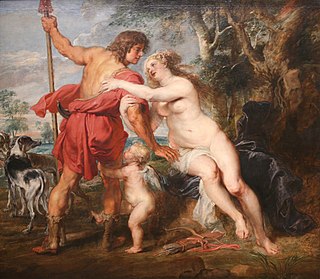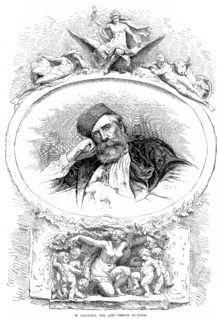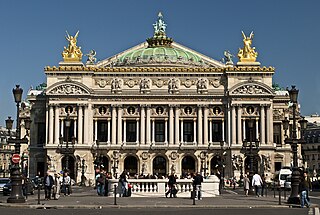
by Ignaz Eigner (1875)
![Monument to Garibaldi [fr] in Nice Garibaldi Niza.jpg](http://upload.wikimedia.org/wikipedia/commons/thumb/e/e9/Garibaldi_Niza.jpg/338px-Garibaldi_Niza.jpg)
Jean-Baptiste Gustave Deloye (30 April 1838, Sedan - 17 February 1899, Paris) was a French sculptor and medallist in the Neo-Baroque style.

![Monument to Garibaldi [fr] in Nice Garibaldi Niza.jpg](http://upload.wikimedia.org/wikipedia/commons/thumb/e/e9/Garibaldi_Niza.jpg/338px-Garibaldi_Niza.jpg)
Jean-Baptiste Gustave Deloye (30 April 1838, Sedan - 17 February 1899, Paris) was a French sculptor and medallist in the Neo-Baroque style.
He was a student of François Jouffroy and Jean-Pierre Dantan at the École des beaux-arts de Paris. In 1862, he was awarded second place for sculpture in the Prix de Rome. He was a frequent exhibitor at the Salon and received several commissions for monuments from the French government.
Among his most outstanding works are the caryatids at the Château de Chenonceaux, the Château de La Boissière [1] and the Château d'Aynac . [2] His best known work is a monument to Giuseppe Garibaldi (1891), commissioned by the city of Nice, done from an original design by Antoine Étex.That same year, he contributed two bas-reliefs for a monument to Juan Santamaría, a national hero of Costa Rica, in Alajuela, created by his friend Aristide Croisy. [3]
In 1892, he was named a Knight in the Legion of Honor. [4] He also created numerous decorative works at public buildings in Vienna, Rome and St. Petersburg and smaller figures for the Meissen Porcelain factory. His statue of Mark the Evangelist on a winged lion is on display at the Musée d'Orsay. [5]
He is buried at L'Étang-la-Ville.

The Baroque is a style of architecture, music, dance, painting, sculpture, and other arts that flourished in Europe from the early 17th century until the 1740s. In the territories of the Spanish and Portuguese empires including the Iberian Peninsula it continued, together with new styles, until the first decade of the 19th century. It followed Renaissance art and Mannerism and preceded the Rococo and Neoclassical styles. It was encouraged by the Catholic Church as a means to counter the simplicity and austerity of Protestant architecture, art, and music, though Lutheran Baroque art developed in parts of Europe as well.

Les Invalides, formally the Hôtel national des Invalides, also Hôtel des Invalides is a complex of buildings in the 7th arrondissement of Paris, France, containing museums and monuments, all relating to the military history of France, as well as a hospital and a retirement home for war veterans, the buildings’ original purpose. The buildings house the Musée de l'Armée, the military museum of the Army of France, the Musée des Plans-Reliefs, and the Musée d'Histoire Contemporaine. The complex also includes the former hospital chapel, now national cathedral of the French military, and the adjacent former Royal Chapel known as the Dôme des Invalides, the tallest church building in Paris at a height of 107 meters. The latter has been converted into a shrine of some of France's leading military figures, most notably the tomb of Napoleon.

Jean-Baptiste Carpeaux was a French sculptor and painter during the Second Empire under Napoleon III.

Edmé Bouchardon was a French sculptor best known for his neoclassical statues in the gardens of the Palace of Versailles, his medals, his equestrian statue of Louis XV of France for the Place de la Concorde (destroyed during the French Revolution; and for the Fountain of Four Seasons in Paris. He was also a draftsman and painter, and made celebrated series of engravings of working-class Parisians.

Gustave Clarence Rodolphe Boulanger was a French figure painter and Academic artist and teacher known for his Classical and Orientalist subjects.

Jean-Baptiste Tuby was a French sculptor of Italian origins, best known for the sculpture in the fountains of the Gardens of Versailles. His work expresses the exuberance of the Baroque blended with the classicism of the Style Louis XIV.

Louis XVI style, also called Louis Seize, is a style of architecture, furniture, decoration and art which developed in France during the 19-year reign of Louis XVI (1774–1793), just before the French Revolution. It saw the final phase of the Baroque style as well as the birth of French Neoclassicism. The style was a reaction against the elaborate ornament of the preceding Baroque period. It was inspired in part by the discoveries of ancient Roman paintings, sculpture and architecture in Herculaneum and Pompeii. Its features included the straight column, the simplicity of the post-and-lintel, the architrave of the Greek temple. It also expressed the Rousseau-inspired values of returning to nature and the view of nature as an idealized and wild but still orderly and inherently worthy model for the arts to follow.

Second Empire style, also known as the Napoleon III style, was a highly eclectic style of architecture and decorative arts, which used elements of many different historical styles, and also made innovative use of modern materials, such as iron frameworks and glass skylights. It flourished during the reign of Emperor Napoleon III in France (1852–1871) and had an important influence on architecture and decoration in the rest of Europe and the United States. Major examples of the style include the Opéra Garnier (1862–1871) in Paris by Charles Garnier, the Bibliothèque nationale de France, the Church of Saint Augustine (1860–1871), and South Hall (1873) at the University of California, Berkeley. The architectural style was closely connected with Haussmann's renovation of Paris carried out during the Second Empire; the new buildings, such as the Opéra, were intended as the focal points of the new boulevards.

Jean-Guillaume Moitte was a French sculptor.

Jean-Baptiste Hugues was a French sculptor.

Nicolas-Sébastien Adam, also called "Adam the Younger", was a French sculptor working in the Neoclassical style. He was born in Nancy and died in Paris.
Jean-Charles-Léon Danjoy was a French architect who specialized in renovating historical buildings.

Jean Barnabé Amy was a French sculptor who mainly specialized in bas relief. He was close to members of the Félibrige, a society that promoted Provençal culture, and often made statues, busts or reliefs of members of this society.

The Style Louis XIV or Louis Quatorze, also called French classicism, was the style of architecture and decorative arts intended to glorify King Louis XIV and his reign. It featured majesty, harmony and regularity. It became the official style during the reign of Louis XIV (1643–1715), imposed upon artists by the newly established Académie royale de peinture et de sculpture and the Académie royale d'architecture. It had an important influence upon the architecture of other European monarchs, from Frederick the Great of Prussia to Peter the Great of Russia. Major architects of the period included François Mansart, Jules Hardouin Mansart, Robert de Cotte, Pierre Le Muet, Claude Perrault, and Louis Le Vau. Major monuments included the Palace of Versailles, the Grand Trianon at Versailles, and the Church of Les Invalides (1675–91).

Neoclassicism is a movement in architecture, design and the arts which was dominant in France between about 1760 to 1830. It emerged as a reaction to the frivolity and excessive ornament of the baroque and rococo styles. In architecture it featured sobriety, straight lines, and forms, such as the pediment and colonnade, based on Ancient Greek and Roman models. In painting it featured heroism and sacrifice in the time of the ancient Romans and Greeks. It began late in the reign of Louis XV, became dominant under Louis XVI, and continued through the French Revolution, the French Directory, and the reign of Napoleon Bonaparte, and the Bourbon Restoration until 1830, when it was gradually replaced as the dominant style by romanticism and eclecticism.
Jean-Baptiste Bouchardon was a 17th/18th-century French sculptor and architect.
Jules-Isidore Lafrance was a French sculptor.

Charles Raoul Verlet was a French sculptor and art professor.
| Wikimedia Commons has media related to Gustave Deloye . |